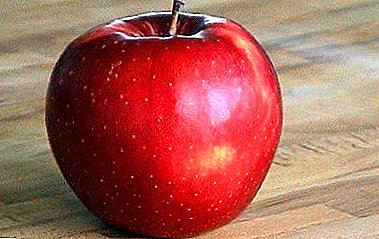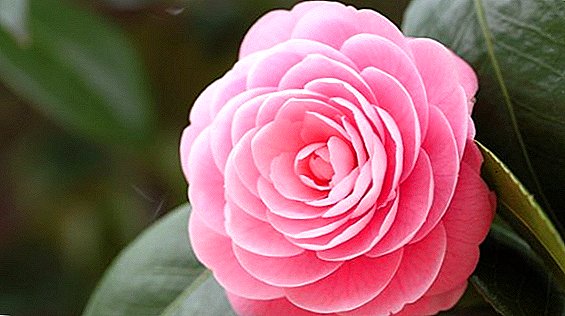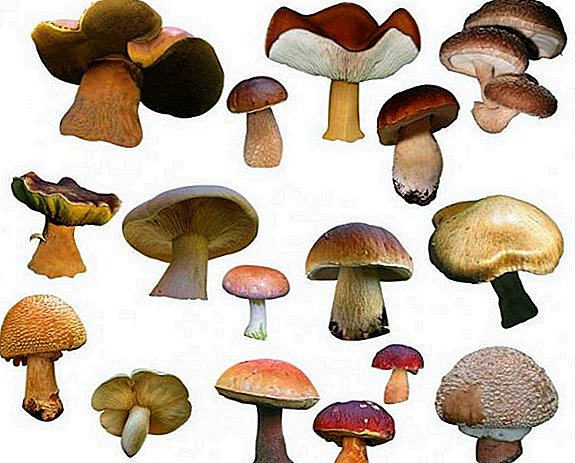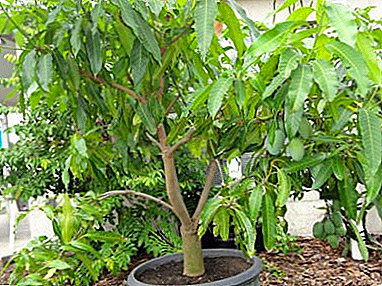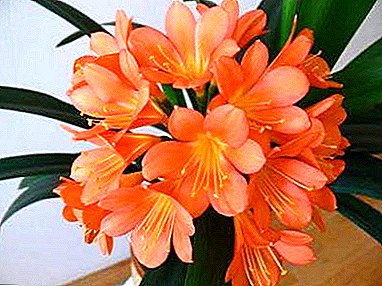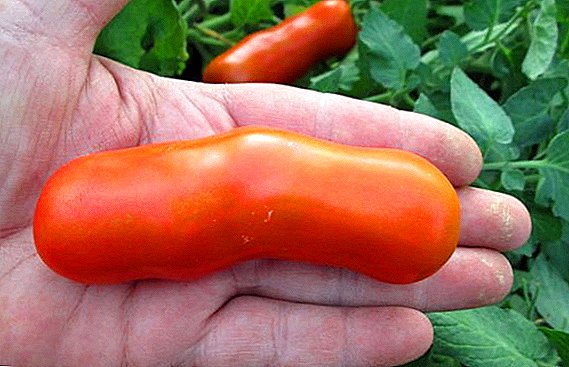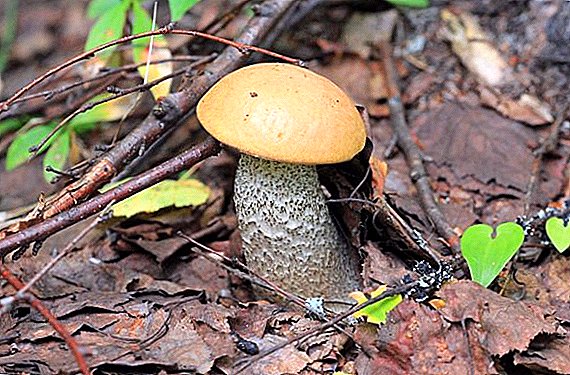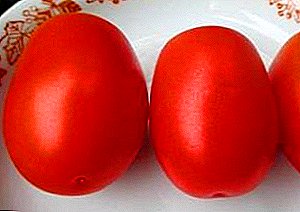
“Pearl of Siberia” is a relatively new variety of greenhouse tomatoes, bred in Siberia. It has a high amount of harvest, taste of the fruit. The variety was bred by our compatriots - Siberian Federal District (Novosibirsk region). An entry in the state register in the Russian Federation for cultivation in the greenhouse conditions of this variety was made in 2009. It was patented by Agros firm Agros.
In our article you will find a complete description of the variety, and its characteristics with the characteristics of cultivation. We will also tell about the resistance of tomatoes to the main diseases of the nightshade.
Tomato "Pearl of Siberia": description of the variety
| Grade name | Pearl of Siberia |
| general description | Mid-season indeterminantny grade |
| Originator | Russia |
| Ripening | 115-120 days |
| The form | Cylindrical, barrel-shaped |
| Colour | Red |
| Average tomato mass | 100-120 grams |
| Application | Universal |
| Yield varieties | 8 kg per square meter |
| Features of growing | Agrotechnika standard |
| Disease resistance | Resistant to major diseases |
 This variety is not a hybrid, reproduction from seeds of grown fruit is possible. Bush "Pearls of Siberia" has no end point of growth - it is indeterminate. Not a stamba, as it has a powerful branched root system, developing in breadth.
This variety is not a hybrid, reproduction from seeds of grown fruit is possible. Bush "Pearls of Siberia" has no end point of growth - it is indeterminate. Not a stamba, as it has a powerful branched root system, developing in breadth.
The plant is more than 150 cm high, a strong multi-leaf stem has several brushes with a large number of fruits. The leaves are medium-sized, wrinkled, "potato" type of dark green color. The inflorescence is simple, intermediate (gap of 2 leaves), formed over 9 leaves. From one inflorescence about 8 fruits turn out.
According to the degree of ripening - sredneranny, fruiting begins on the 115th day after germination. Ripening fruits - from the bottom up. It has good immunity to most diseases ("mosaic", cancer of the stems and roots, late blight, gray and white rot and others).
A high percentage of good harvest with proper care. Designed for growing in greenhouse conditions in areas open to the sun. The harvest from one plant is about 3 kg, from 1 square meter to about 8 kg.
If temperature conditions and light abundance are not observed, the yield may be reduced. Siberian breeders always produce tomatoes with the best qualities.
"The Pearl of Siberia" is no exception, it has several advantages:
- unpretentiousness;
- high yield;
- long fruiting;
- pleasant taste;
- high keeping quality;
- does not crack when treated with heat;
- resistance to diseases and pests.
Deficiencies in the cultivation is not revealed.
You can compare the yield of a variety with others in the table:
| Grade name | Yield |
| Pearl of Siberia | 8 kg per square meter |
| Labrador | 3 kg from a bush |
| Aurora F1 | 13-16 kg per square meter |
| Leopold | 3-4 kg from a bush |
| Aphrodite F1 | 5-6 kg from a bush |
| Locomotive | 12-15 kg per square meter |
| Severenok F1 | 3.5-4 kg from a bush |
| Sanka | 15 kg per square meter |
| Katyusha | 17-20 kg per square meter |
| Miracle lazy | 8 kg per square meter |
Specifications
Fruit Description:
- Shape - slightly elongated, cylindrical (thick, thick barrel).
- Length about 10 cm, weighing 100 - 120 g
- The color of an immature fruit is a pale green color, with an increase in the degree of maturity, the fruits begin to grow brown and in the final have a bright red color.
- The skin is smooth, thin.
- The internal pulp does not creep away, dense, but soft, gentle.
- A lot of seeds, located in 2-3 chambers. Dry matter is found on average.
- Note rich sweetish tomato flavor.
- The collected fruits are stored well and for a long time, transported without consequences.
The most natural and correct way is to eat fresh fruit. Sweet fruit with a slight sourness like most. Well retains its useful qualities in hot dishes. Preservation of whole fruits is transferred perfectly - do not crack. The variety is popular in the production of sauces, ketchups and juices. Good taste gives flexibility to the fruit.
Compare the weight of fruit varieties with others can be in the table:
| Grade name | Fruit weight |
| Pearl of Siberia | 100-120 grams |
| Valentine | 80-90 grams |
| The Tsar Bell | up to 800 grams |
| Fatima | 300-400 grams |
| Caspar | 80-120 grams |
| The Golden Fleece | 85-100 grams |
| Diva | 120 grams |
| Irina | 120 grams |
| Batyana | 250-400 grams |
| Dubrava | 60-105 grams |
A photo



Features of growing
General samples of cultivation were carried out in the Novosibirsk region, were successful. It is proved that the "Pearl of Siberia" can be grown in any region of the Russian Federation, Ukraine. Planted on seedlings disinfected and treated with growth stimulant seeds in early March. Some experienced gardeners advise sprouting seeds in wet material and plant seeds with sprouts in the ground.
 Land for planting should also be disinfected and warmed to room temperature. For convenience, special soil for tomatoes and peppers is sold in kiosks for gardeners. Planted seeds at a distance of 1-2 cm with a recess of 1 cm. After planting, cover with film, thereby forming a certain moisture. When germs appear, the film is removed.
Land for planting should also be disinfected and warmed to room temperature. For convenience, special soil for tomatoes and peppers is sold in kiosks for gardeners. Planted seeds at a distance of 1-2 cm with a recess of 1 cm. After planting, cover with film, thereby forming a certain moisture. When germs appear, the film is removed.
With its growth, the Pearl of Siberia is a rather compact plant. Picks are carried out in the formation of 2 leaves. Watering is done with caution - do not allow water to fall on the leaves. Possible fertilizer fertilizer. At the age of 50 days with growth of about 20 cm, seedlings are ready for transplanting to a permanent place. To minimize damage to plants, hardening of seedlings is carried out 2 weeks before planting in the greenhouse. The soil in the greenhouse should be digged with last year's humus, treated with antimicrobial agent.
Tomatoes are planted in the wells formed in a row, the distance between them is 50 cm. The distance between the rows is about 70 cm. After transplantation, irrigate under the root and close the greenhouse for 10 days. Then carry out feeding, watering, weeding, loosening on the schedule. Mulching will also not be superfluous.
Ganging requires a plant form in 1 stalk, stepchildren clean every 1, 5 weeks. Garter is necessary - plants are high and fruitful. Tied to the trellis with synthetic materials. In July, harvested.
 Read on our website: the most common diseases of tomatoes in greenhouses and how to deal with them.
Read on our website: the most common diseases of tomatoes in greenhouses and how to deal with them.What tomatoes are resistant to most diseases and resistant to late blight? What methods of protection against phytophthora exist?
Diseases and pests
A high percentage of resistance to many diseases and pests.
The key to successful harvests is the use of new varieties. The “Pearl of Siberia” will not become an outcast in your greenhouses. Reviews of these tomatoes are excellent.
| Mid-season | Medium early | Late-ripening |
| Anastasia | Budenovka | Prime minister |
| Raspberry wine | Mystery of nature | Grapefruit |
| Royal gift | Pink king | De Barao the Giant |
| Malachite Box | Cardinal | De barao |
| Pink heart | Grandma's | Yusupovskiy |
| Cypress | Lev Tolstoy | Altaic |
| Raspberry giant | Danko | Rocket |




